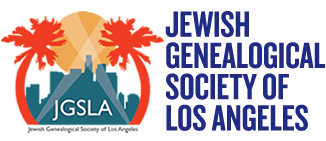Information from:
Newmark, Harris. Sixty Years in Southern California 1853-1913. NY. 1926.
Vorspan, Max and Gartner, Lloyd. History of the Jews of Los Angeles. Huntington Library. 1970.
Thanks to Wendy Elliott Scheinberg: Timeline of Boyle Heights 1900-1939; to Harriet Rochlin for her insight, her many additions and corrections; to Bob Hattem, JGSLA Archivist.
